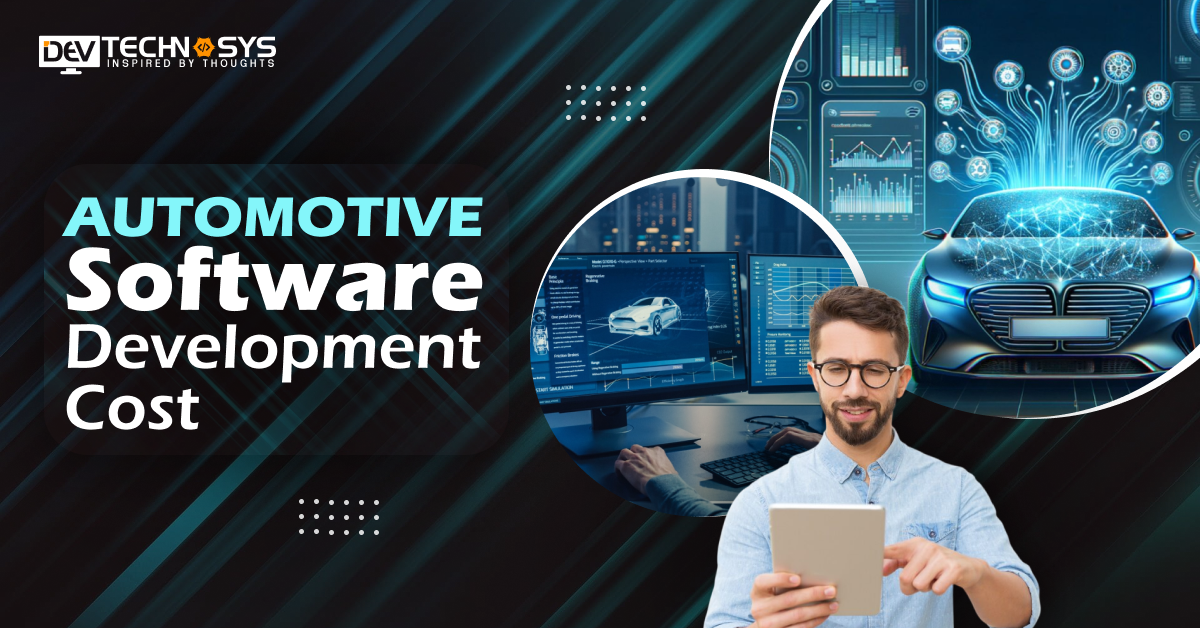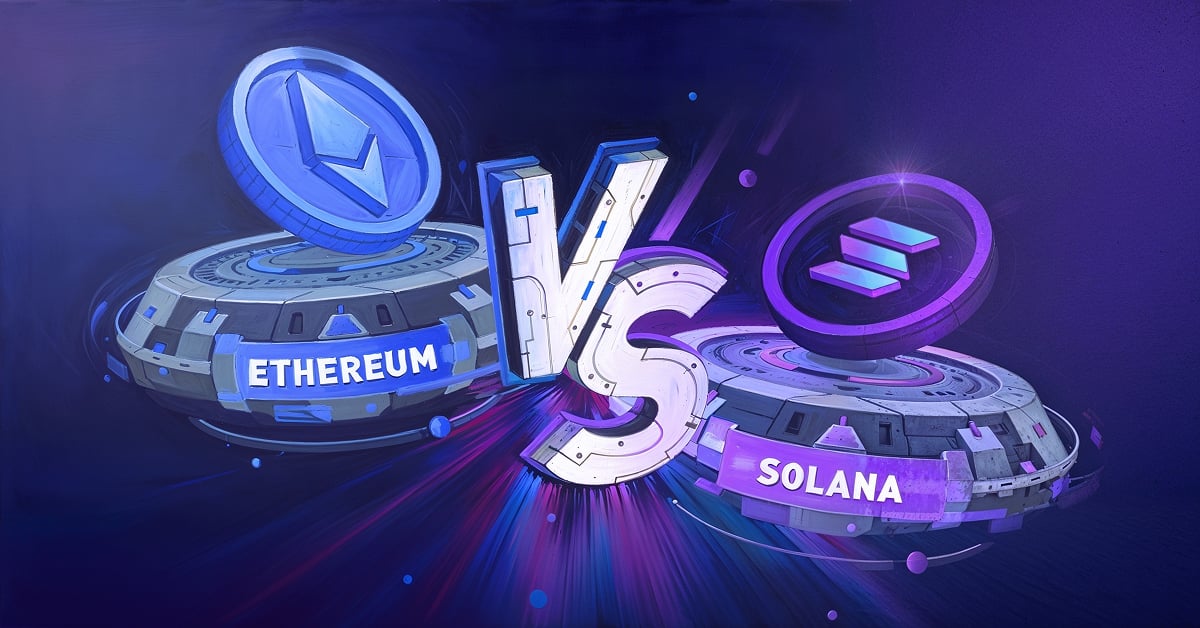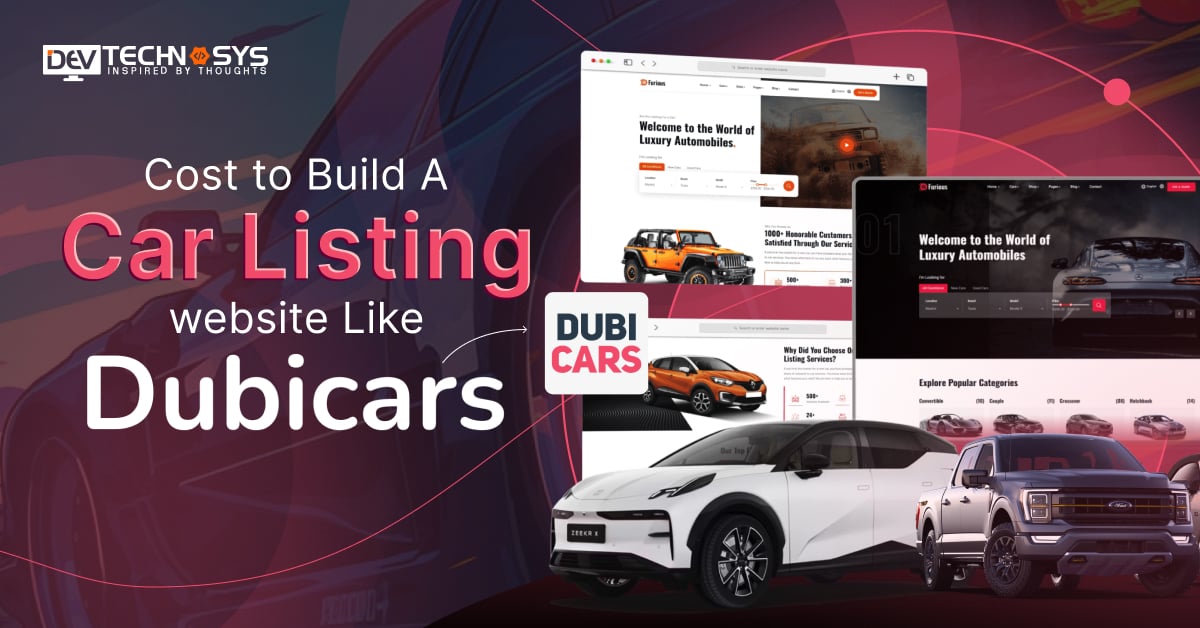Let’s talk numbers. The automotive industry is undergoing a massive digital transformation, and you, as entrepreneurs, startups, and tech enthusiasts, are at the forefront of it. Software is at the heart of this revolution, from self-driving cars to advanced infotainment systems, changing how we drive.
But how much does it cost to develop this cutting-edge automotive software? That’s a question many entrepreneurs, startups, and established automakers are asking.
In this blog, we’ll delve into the factors that influence the cost of automotive software development. Understanding these factors allows you to make informed decisions and effectively manage your budget. We’ll break down the process, from initial concept to final deployment, and discuss the various cost considerations.
So, whether you’re a visionary entrepreneur or a curious tech enthusiast, rest assured we’ve made this journey into the complexities of automotive software development costs as accessible. Let’s get started!
What is the Automotive Software Development Cost?
The automotive software development cost varies from $8,000 to $27,000. However, if you are wondering why there is an exact cost and why it varies, Here is something you need to know. There are multiple factors, including features, complexity platform, automotive software developer team, security compliance, and many more, that you just need to know.
I have compiled a detailed list of factors below that you need to understand. Furthermore, I created a table for a small estimation guide. After this, you can read a detailed guide.
| Automotive Software Development | Estimated Cost | Time Frame |
| Simple Automotive Development | $8000 – $13000 | 3 to 6 Months |
| Medium-Complex Automotive Development | $13000 – $21000 | 6 to 9 Months |
| High-Complex Automotive Development | $27000+ | 10+ Months |
10 Factors Affecting the Custom Automotive Software Development Cost
Know all of the incredible factors that affect the cost to develop automotive software. In this section, I have covered ten factors impacting the overall cost of automotive software development. So, without further ado, let’s get this started.
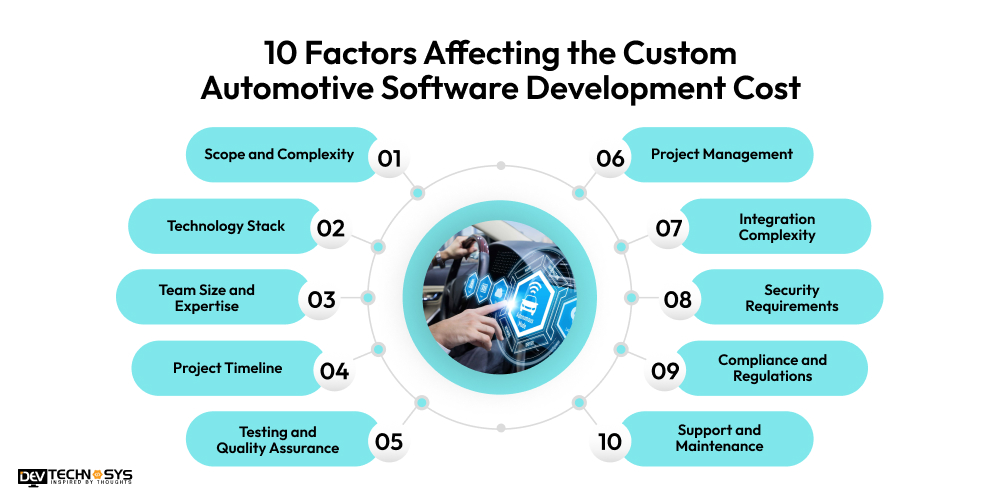
1. Scope and Complexity:
With its features, capabilities, and integrations, the app program’s difficulty greatly affects the time and cost of custom automotive software development. ADAS (Advanced Driver-Assistance Systems) or autonomous vehicles, on the other hand, are highly complex and require extensive investments.
| Feature Type | Cost Range (USD) |
| Basic Features | $8,000 – $12,000 |
| Medium Complexity (e.g., GPS) | $12,000 – $20,000 |
| High Complexity (e.g., ADAS) | $20,000 – $27,000 |
2. Technology Stack:
Technologies and tools directly impact the cost to develop automotive software. The latest, more advanced technologies require extra training and licensing fees. However, traditional, most-used technologies can be cheaper.
| Technology Type | Cost Range (USD) |
| Traditional Technologies | $8,000 – $15,000 |
| Advanced Technologies (AI, ML, etc.) | $15,000 – $27,000 |
3. Team Size and Expertise:
The automotive software development services providers size and its experience are the main determinants of success. The cost to hire a software developer with particular skills in car software development will be more expensive, but it will be more rapid and more dependable.
| Team Composition | Cost Range (USD) |
| Small Team (2-3 developers) | $8,000 – $13,000 |
| Medium Team (4-6 developers) | $13,000 – $20,000 |
| Large Team (7+ developers) | $20,000 – $27,000 |
4. Project Timeline:
Shorter development timelines can result in additional resources and overtime, thereby increasing cost to develop automotive software. On the other hand, longer time limits may lead to more efficient use of resources and the cost of automotive custom software development.
| Timeline | Cost Range (USD) |
| Long Timeline (6+ months) | $8,000 – $15,000 |
| Moderate Timeline (3-6 months) | $15,000 – $22,000 |
| Short Timeline (less than 3 months) | $22,000 – $27,000 |
5. Testing and Quality Assurance:
Thorough testing can only guarantee the Safety and reliability of automotive software. This phase involves long test cycles, e.g., unit testing, integration testing, and system testing, which have the largest impact on the total cost to develop automotive software.
| Testing Level | Cost Range (USD) |
| Basic Testing (Unit Testing) | $8,000 – $12,000 |
| Medium Testing (Integration Testing) | $12,000 – $20,000 |
| Comprehensive Testing | $20,000 – $27,000 |
6. Project Management:
The management of the project is the cornerstone of ensuring that the project is on the right track and within the budget. An expert automotive software development services provider experts can manage the resources, detect possible risks, and choose the right course of action to reduce the cost of automotive software development.
| Management Complexity | Cost Range (USD) |
| Basic Management | $8,000 – $13,000 |
| Moderate Management | $13,000 – $20,000 |
| Advanced Management | $20,000 – $27,000 |
7. Integration Complexity:
The complexity and energy-consuming nature of automotive software implementation over the existing vehicle control and hardware systems will be a big challenge. Integration levels such as communication protocol and data exchange will increase the automotive software development cost.
| Integration Level | Cost Range (USD) |
| Basic Integration | $8,000 – $12,000 |
| Medium Complexity Integration | $12,000 – $20,000 |
| High Complexity Integration | $20,000 – $27,000 |
8. Security Requirements:
Automotive software development security is obligatory to protect against cyber-security; these rigid security guidelines must be met. Encryption, authentication, and intrusion detection systems, used as security measures a technology company died to comply with, will serve as pricey as extra, targeting prospering technology development.
| Security Level | Cost Range (USD) |
| Basic Security Measures | $8,000 – $13,000 |
| Moderate Security Measures | $13,000 – $20,000 |
| Advanced Security Measures | $20,000 – $27,000 |
9. Compliance and Regulations:
Before its application, all safety-critical automotive software must obtain compliance certification from the software development company in automotive industry standards and regulations, such as ISO 26262 for Functional Safety.
Observing the previous requirements, which is accompanied by further documentation, testing, and certification processes, all increase the cost of automotive software development.
| Regulatory Compliance | Cost Range (USD) |
| Basic Compliance | $8,000 – $13,000 |
| Standard Compliance | $13,000 – $20,000 |
| High-Level Compliance (ISO 26262) | $20,000 – $27,000 |
10. Support and Maintenance:
Continual automotive app maintenance services , and by extension, support, is a key driver in ensuring that automotive software performs correctly and maintains reliability over the long run. Doing this involves patching bugs, providing updates, and technical support that may become a large ongoing automotive software development cost.
| Support and Maintenance Type | Cost Range (USD) |
| Basic Maintenance | $8,000 – $12,000 |
| Medium-Level Support | $12,000 – $20,000 |
| High-Level Support | $20,000 – $27,000 |
Features Affecting the Automotive Software Cost
The overall cost to create automotive software is also affected by some features that need to be an important part of it. So here are some features that increase the cost.
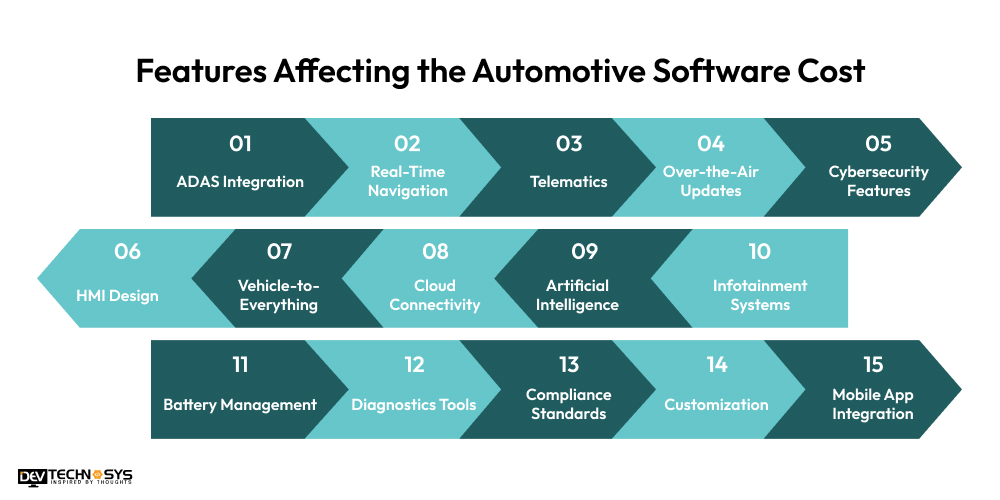
1. ADAS Integration:
ADAS uses complex algorithms and hardware compatibility, which has improved the product requirements and raised the costs significantly.
2. Real-Time Navigation:
Precision-level, live, GPS integration plus map updates need strong backend support and API licensing capabilities, thereby escalating cost for automotive software development.
3. Telematics:
IoT-based vehicle performance monitoring systems, coupled with data analytics and cloud support, add another area of focus, resulting in increased costs. The cost will also increase as this feature requires Saas development services with experience and expertise.
4. Over-the-Air Updates:
Allowing OTA software updates using a secure infrastructure system along with industry standards is a key reason why the development and maintenance budgets are increasing.
5. Cybersecurity Features:
Strong encryption and secure communication protocols are the media to safeguard from any online threat, but they are expensive as this requirement is fulfilled only by specialized experts.
6. HMI Design:
User-friendly machines, such as highly interactive and customized HMIs, can be designed and tested; however, this burdens companies’ budgets.
7. Vehicle-to-Everything (V2X):
V2X communication involves your vehicle’s real-time connectivity and network protocols, leading to higher software development complexity.
8. Cloud Connectivity:
Using cloud storage for data storage and establishing control via the internet, which involves the cloud infrastructure, increases the cost of automotive mobile app development.
9. Artificial Intelligence:
Integrating artificial intelligence into automotive software requires, for instance, using machine learning models in predictive maintenance or adaptive cruise control, which triggers higher R&D and cost for software development.
10. Infotainment Systems:
Exhausting the potential of multimedia content, application integrations, and real-time updates demands outstanding development, licensing, and testing efforts.
11. Battery Management:
In electric vehicles, implementing the most advanced BMS functions requires very sophisticated algorithms, increasing the cost of automotive software development.
12. Diagnostics Tools:
How software and hardware are integrated into the system to perform real-time diagnostics and record the information needed; this raises automotive software development solutions’ cost
13. Compliance Standards:
The collaboration with the existing safety regulations of the government and emission guidelines in the automotive industry are some of the integral parts, to be implemented, projected long testing, certification, and compliance processes causing the cost to build automotive software.
14. Customization:
Bringing in configurable user preferences or settings is a modular design, which calls for more coding and testing efforts.
15. Mobile App Integration:
The development of additional mobile applications that serve as companions for distance monitoring and control also includes cross-platform compatibility and API integration, which in turn increases the cost to build automotive software.
Why Does an Entrepreneur Want to Invest in Automotive Software Development?
Technological progress and changes in user preferences are massively altering the automotive industry, and this is a visionary transition. This has become a great opportunity for startup guys to deal with automotive software development. Here are five compelling reasons why entrepreneurs are drawn to this sector:
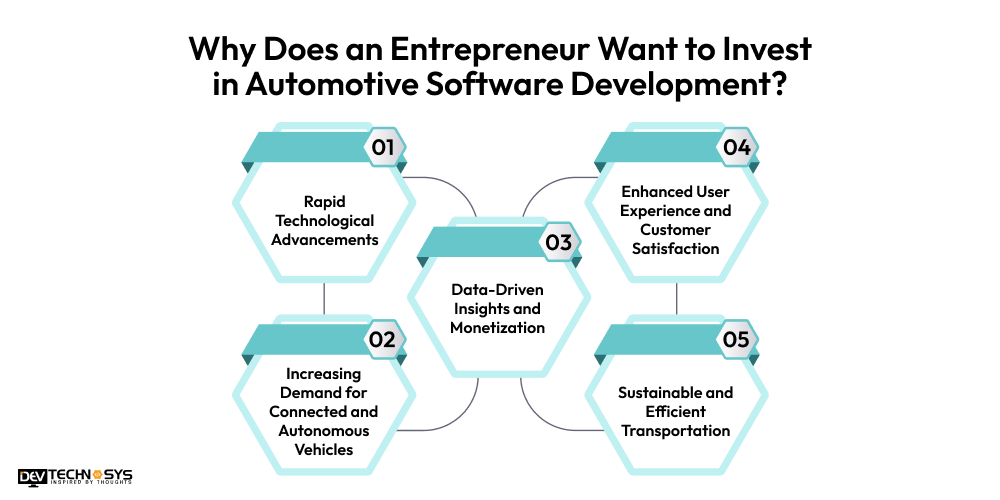
1. Rapid Technological Advancements:
The automotive industry is a field of technologies like artificial intelligence, machine learning, and autonomous driving systems that have seen a rush of introduction quickly. These technologies are prompting innovation and the grow of new business models.
Automotive software development is the right choice for entrepreneurs to be on this technology wave and make money on new opportunities. Connect with a leading IT consulting company if you want to invest in some automotive software.
2. Increasing Demand for Connected and Autonomous Vehicles:
Customers are increasingly asking for vehicles that are connected to the Internet and have self-driving capabilities. This rising trend has generated a huge market for automotive software solutions that make these features possible.
By investing in automotive software development, the entrepreneurs have a chance to serve this emerging market, which could give them considerable wealth.
3. Data-Driven Insights and Monetization:
Contemporary vehicles can collect enough data that they might make up for it, including the driver’s behavior, how such vehicles get re-distracted in traffic, and their necessary preferences. This data can then be transcribed into useful insights, which companies can use to generate new money-making methods.
Thus, entrepreneurs can put money into software that will gather, examine, and even earn from this data, which would be a source of immense wealth for companies.
4. Enhanced User Experience and Customer Satisfaction:
Automotive software can benefit users in many ways, including personalized infotainment systems, voice-controlled systems, and advanced driver assistance systems. Businesses can get involved in the software development process to produce products that will quickly become their customers’ favorites and thus build brand loyalty.
5. Sustainable and Efficient Transportation:
The software development for the automotive industry is primarily oriented towards designing successful and sustainable methods of transport that will be implemented in the future.
Software is key in getting the best out of the vehicle, reducing emissions, and enhancing the fuel economy. Entrepreneurs may be one of the most powerful catalysts for this goal by supporting software programs that help sustainable vehicles to thrive.
5 Stages of Software Development Automotive
If you know about the cost now, you must wonder about the automotive software development process. Having a good in-depth guide on development is also good for competitor research. So, without further ado let’s get this blog started.
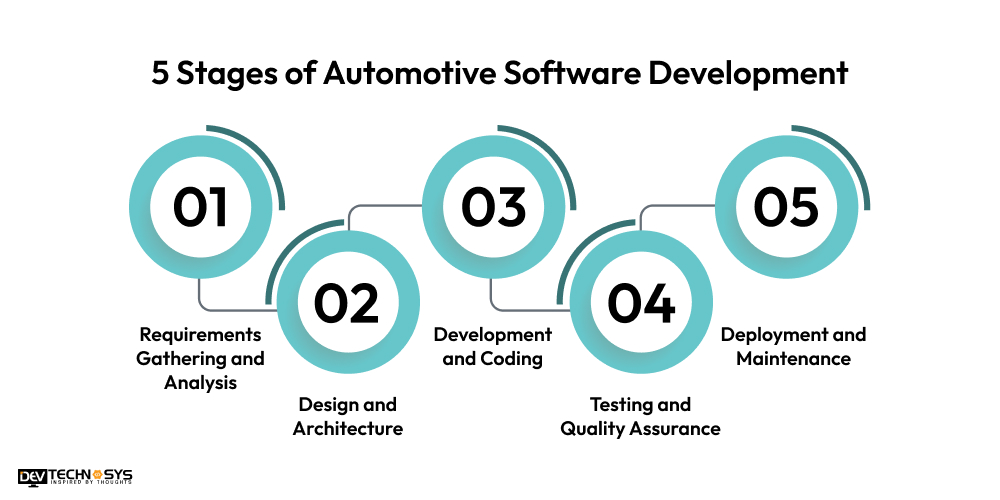
1. Requirements Gathering and Analysis:
This is the first and very important stage in which automotive software development life cycle ensures the software solution conforms to your exact needs. The software product development company works hand in hand with you to do things such as, what is the purpose of the project, who are the target audiences and what are the software’s key features.
Thus, the two sides’ mutual effort ensures that the software meets the company’s unique needs and the users’ goals.
2. Design and Architecture:
If the requirements are understood, then the design phase will be completed. One of the key tasks carried out by the automotive software development company is drawing up a strong architecture that highlights the software’s components, how they interact, and the whole system design. Sketching the user interface (UI) and UX is also part of this phase to ensure the user’s interaction is easy and intuitive.
3. Development and Coding:
After laying the firm foundation of the design, the custom software development company proceeds to code the software. They use programming languages, tools, and industry best practices to create functionalities that make up the software’s foundation. In this stage, clean, efficient, and well-documented code is written to ensure maintainability and future scalability.
4. Testing and Quality Assurance:
Thorough testing is a very important step in the software development process because it allows the team to identify and fix any bugs or issues in the software that could have been overlooked. The development team then proceeds to carry out different types of testing, such as unit testing, integration testing, and system testing. This thorough testing process is a guarantee that the software is of high quality and that it is faultless.
5. Deployment and Maintenance:
The last but not least stage in building automotive software is knowing that your hired automotive software development company will work on deployment. After all the quality checks are passed, the software is moved to the target environment.
This environment could be the vehicle’s embedded system or a cloud-based platform. After deployment, continuous maintenance and support are needed to fix any problems, update the system, and ensure the software is working and secure.
5 Monetization Techniques of Automotive Software
Having knowledge on the cost to develop an automotive website isn’t enough if you want to make it successful. The automotive industry is going through a digital transformation, and software is the main ingredient of the new cars.
This change, in turn, is the foundation of the different monetization possibilities. Here are 5 key monetization techniques for the automotive embedded software development industry:
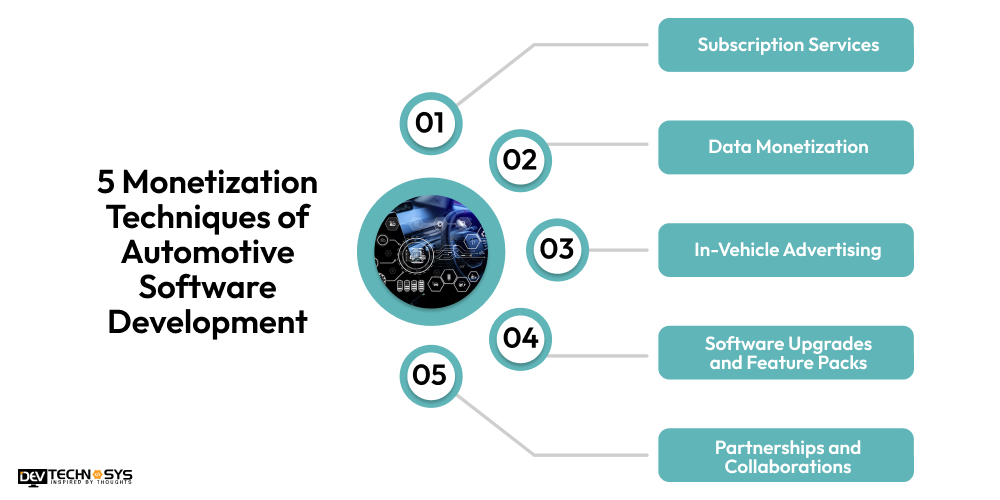
1. Subscription Services:
Car manufacturers can offer subscription-based services connecting features like ADAS, remote diagnostics, and OTA updates solely (ADAS) to their customers. This model provides recurring revenue and allows for flexible feature delivery and pricing.
2. Data Monetization:
Vehicles churn out huge amounts of data relating to driving patterns, traffic situations, and user preferences. After this data is anonymized and bulked, it can be used to provide insightful information to various industries. Automakers can offer licenses of this data to third-party companies for their R&D, marketing, and urban planning projects.
3. In-Vehicle Advertising:
Digital displays inside vehicles can show directed ads. By conducting research on driver trends and preferences, advertisers can distribute more appropriate advertisements, thereby increasing engagement and generating revenue.
4. Software Upgrades and Feature Packs:
Automakers can provide additional software features and updates at a price that can be much more than merely cosmetic changes. Customers can personalize their cars with advanced software, including autonomous driving features, enriched infotainment systems, or uniquely designed user experiences.
5. Partnerships and Collaborations:
Partnerships and Collaborations Bring together technology companies, relevant personnel from telecom companies, and other industry players, enabling the creation of innovative services and revenue streams. For example, partnerships with streaming services, navigation providers, or insurance companies can create bundle services and shared revenue models.
How Dev Technosys Can Help in Automotive Software Development?
Hopefully you liked this blog and now you know the cost for automotive software development. Dev Technosys is a leading custom software development services provider, our specialty is providing high-quality automotive software solutions at affordable prices. Our automotive software development company utilizes state-of-the-art technologies to invent innovative software in different areas of automotive applications, including ADAS, infotainment systems, and telematics.
We understand the critical role of software in modern vehicles and are committed to providing reliable, efficient, and cost-effective solutions that meet the highest industry standards.
Frequently Asked Questions
Q1. What Is Automotive Software Maintenance Cost?
The software maintenance cost varies from $2000 to $5000 and depends on various factors, such as software complexity, frequency of updates, and support level. Regular maintenance, bug fixes, and security patches are essential.
Q2. What Is Automotive Software Development Cost?
The automotive software development cost varies from $8,000 to $27,000. However the cost to build automotive software varies on factors like software complexity, features, platform, and team expertise influence the cost.
Q3.Why Choose Dev Technosys To Build Automotive Software?
Here are a few reasons why you must build automotive software:
- Cost-effective
- Reliable & Authentic
- Innovative automotive software solutions.
- High-quality products
- On-time delivery.
Q4.What Is Automotive Software Development?
Automotive software is a vehicle system, including information systems, safety systems, and engine control units. It offers organization expertise in embedded systems, real-time tracking, and automotive standards.
